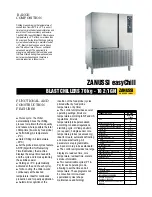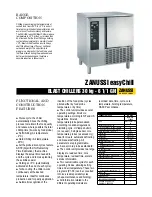
JOHNSON CONTROLS
33
SECTION 1 – INSTALLATION
FORM 160.81-NOM1
ISSUE DATE: 10/3/2020
1
Condenser Water Circuit
For proper operation of the unit, condenser refrigerant
pressure must be maintained above evaporator pres-
sure. If operating conditions will fulfill this require-
ment, no attempt should be made to control condenser
water temperature by means of automatic valves,
cycling of the cooling tower fan or other means. YR
chillers are designed to function satisfactorily and ef-
ficiently, when condenser water is allowed to seek its
own temperature level at reduced loads and off-peak
seasons of the year. YR Chillers can be operated with
entering condensing water temperature that is less
than design conditions. The following formula is used
to calculate the minimum entering condensing water
temperature.
R-134a Refrigerant
ECW minimum =
LCWT+16+[(%of load/100)x(10-full load
condenser water ∆T)]
Where:
ECW minimum =
Minimum Entering Condensing Water Tempera-
ture ºF
LCWT =
Leaving Chilled Water Temperature ºF
This is a guideline for estimating ECW minimum. Ac-
tual ECW minimum will vary.
Operating the chiller below it's minimum
ECW could result in “Low Oil Differ
-
ential” shut downs. There are different
methods used to maintain minimum ECW,
however the most effective is to install a
three-port by-pass valve in the leaving
condenser water line. Refer to Figure 15
Operating below the minimum entering
condensing water will not provide energy
savings and will result in oil management
problems. However, if entering con-
denser water temperature can go below
the required minimum, condenser water
temperature must be maintained equal to
or slightly higher than the required mini-
mum. Refer to Figure 14 on page 33.
Special entering condensing water temperature controls
may be required when long condensing water circuits
are used and the chiller is being started with minimum
load available.
FIGURE 14 -
SCHEMATIC OF A TYPICAL PIPING ARRANGEMENT
LD07069
















































